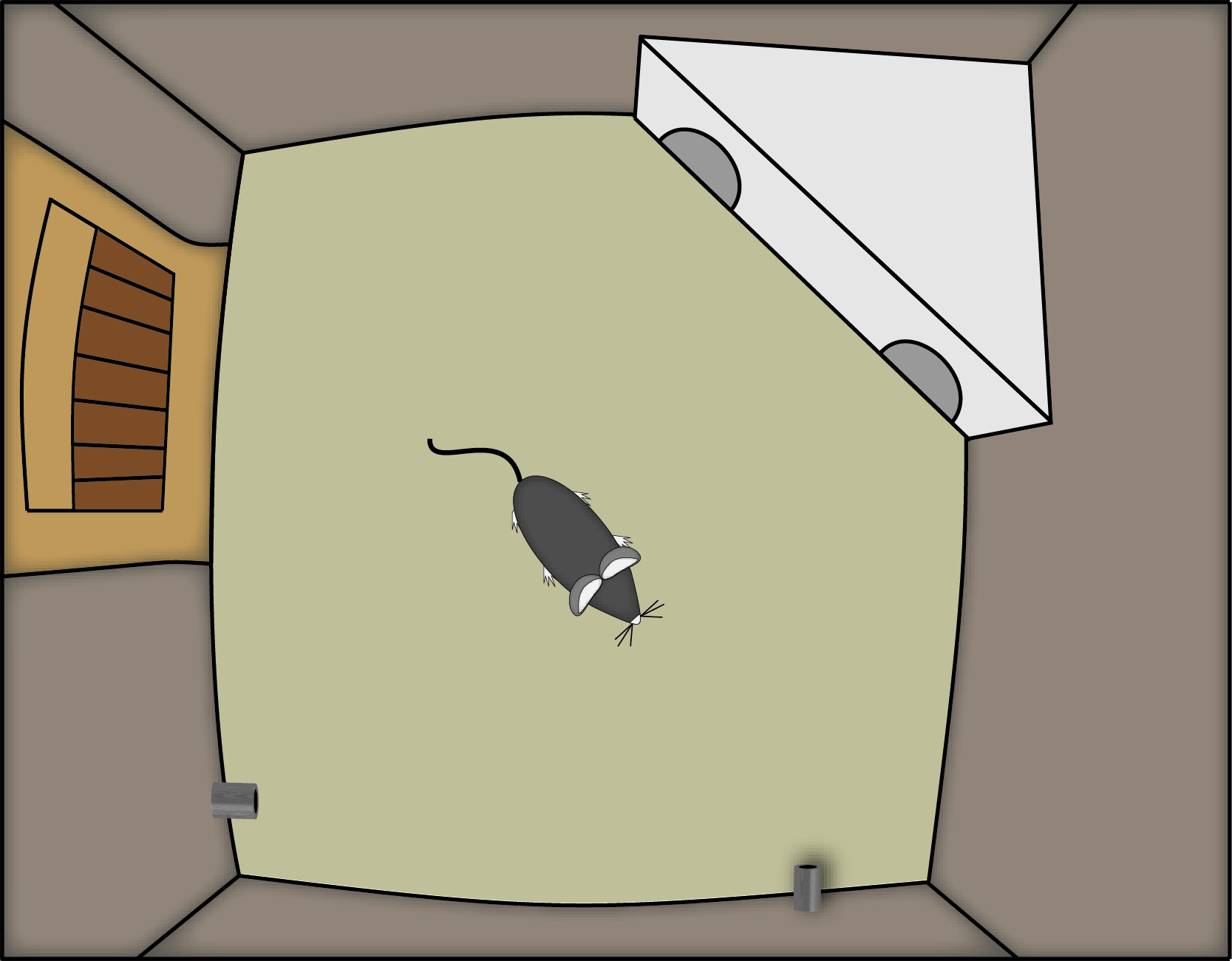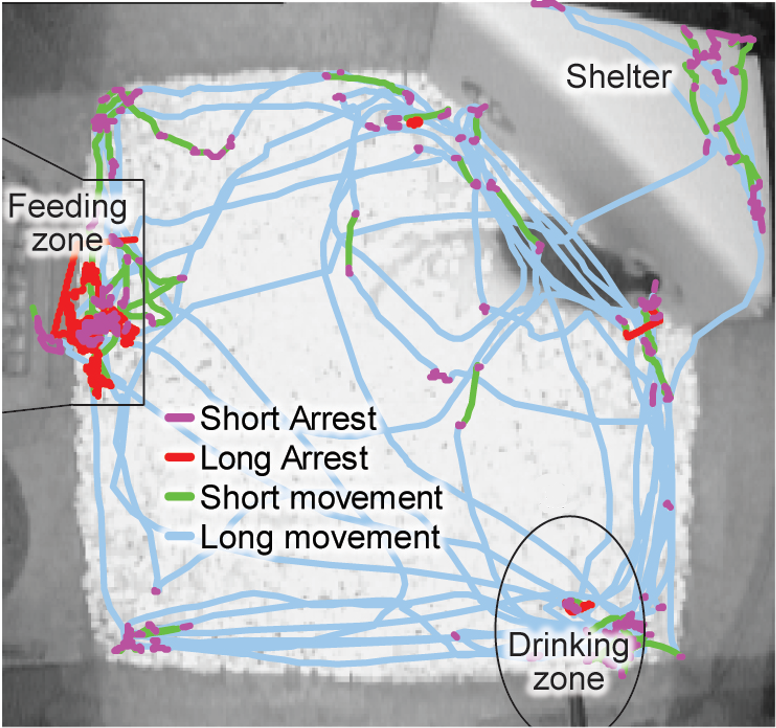Loos2 project protocol
Sheltering behavior and locomotor activity in males of 11 inbred strains of mice and within-strain variation of 8 of those strains (2016)
Loos M, Koopmans BWith: Aarts E, Maroteaux G, van der Sluis S, Verhage M, Smit AB, Neuro-BSIK Mouse Phenomics Consortium
Project protocol - Contents
Workflow and sampling
Equipment and supplies
Figure 1. Schematic of home cage. Procedure: Automated home-cage observation
Figure 2. Segmentation of sheltering behavior and activity into elements. A representative track of ~17 min for a C57BL/6J mouse, dissected into elements by individually determined thresholds. Procedure: Analysis of spontaneous behavior
Procedure: Analysis of within-strain variability
PCA identified 22 orthogonal PCs of within-strain variability across the entire dataset.
References Benjamini Y, Lipkind D, Horev G, Fonio E, Kafkafi N et al. 2010. Ten ways to improve the quality of descriptions of whole-animal movement. Neurosci Biobehav Rev 34:1351-1365. Hen I, Sakov A, Kafkafi N, Golani I, Benjamini Y. 2004 The dynamics of spatial behavior: how can robust smoothing techniques help? J Neurosci Methods 133: 161-172. |

